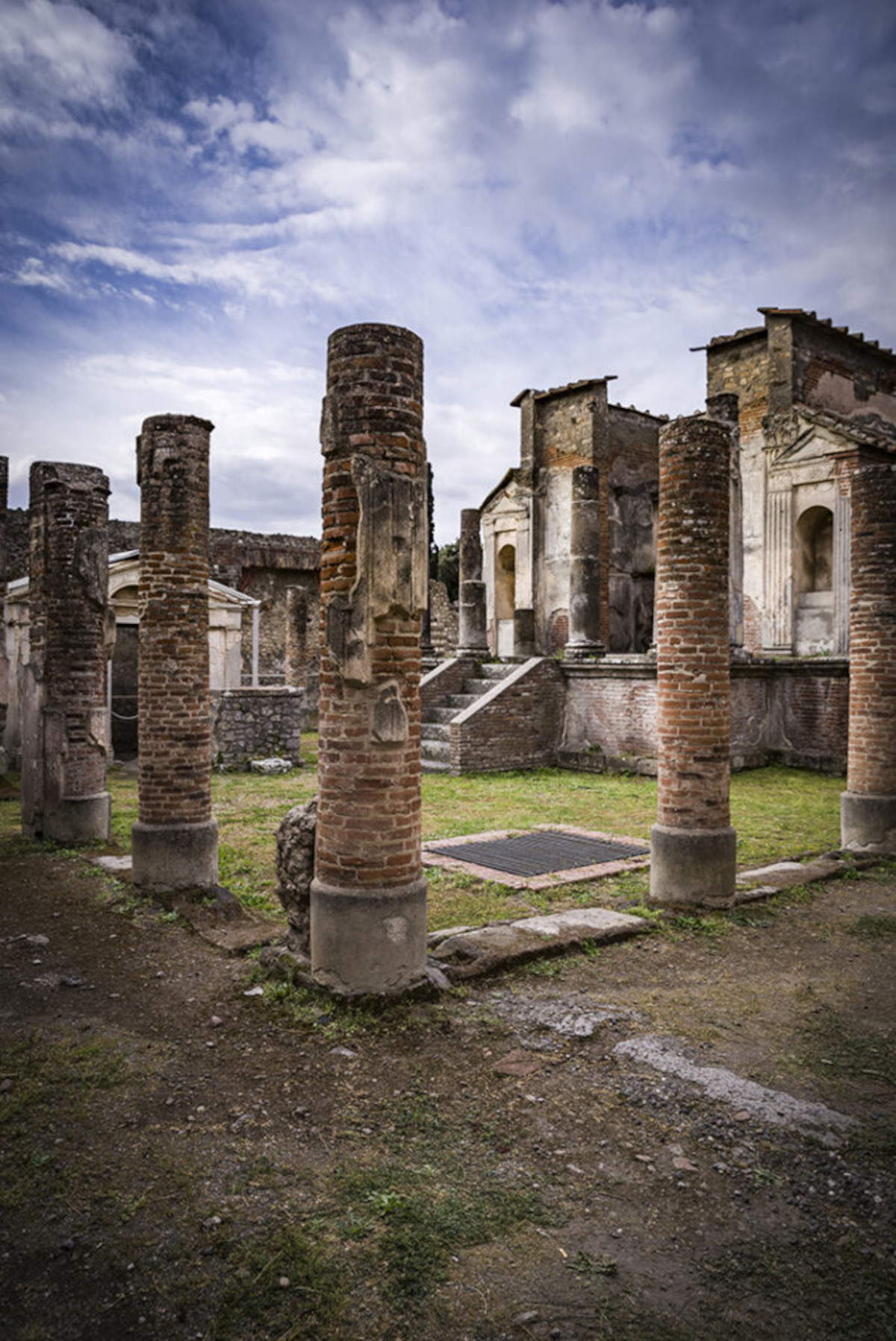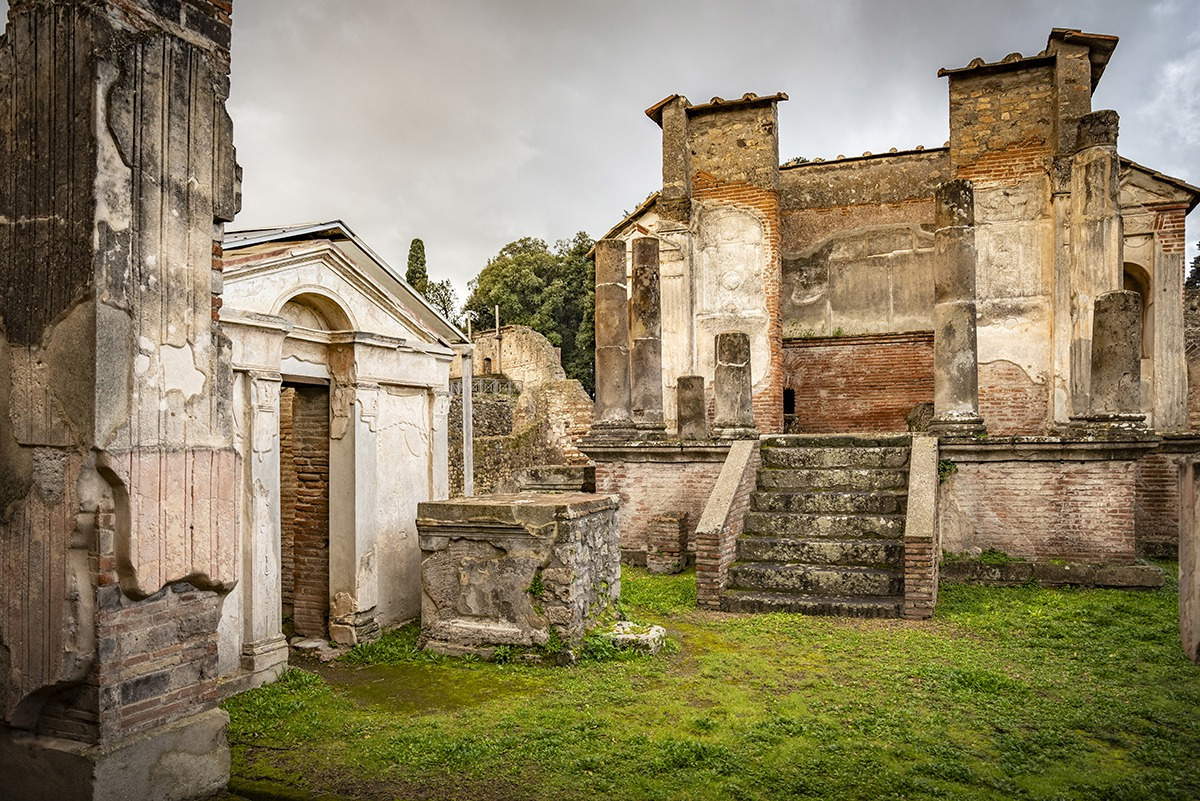A psychoacoustic journey among the “magical” sounds of the ancient sacred tradition will be offered to the public on Sunday, Sept. 21, at the Temple of Isis at the Archaeological Park of Pompeii, with three appointments at 8, 8:30 and 9 p.m. Each round will be reserved for 30 participants. Tickets cost €7, available for purchase at www.ticketone.it, with access from Piazza Esedra.
The audience will be immersed in the sounds of sistri, flutes, reeds and drums, instruments capable of awakening deep emotions and leading toward an experience of inner reconnection. The event draws inspiration from mystery rituals dedicated to the goddess Isis, in a space that still retains an aura of fascination and introspection. The vibrations of ancient instruments, imported from Egypt and used in the rituals, will accompany visitors on this sensory journey.
The experience will be led by musicians from the Synaulia group, who have been engaged for years in the study and reenactment of music and dances of ancient imperial Rome. The path will also be enriched with dances and scents of incense, evoking ritual atmospheres of the past.
The cult of Isis, of Egyptian origin, spread throughout the Mediterranean from the 3rd century BC until it reached Pompeii. Mystical and reserved for initiates, the cult recounted the story of the goddess who reassembled the body of her husband-brother Osiris, who had been killed and dismembered by Seth, restoring him to life through her magical powers. The message of hope in an existence beyond death made the cult particularly popular among all classes of Pompeian society. Excavated in 1764, the Temple of Isis appeared remarkably preserved in its decorations and furnishings. Among its visitors was the young Mozart, who drew inspiration from it during a trip to Pompeii in 1770: the sets of The Magic Flute, performed in Vienna in 1791, were strongly influenced by the fascination of the Pompeian monument.
The appointment does not intend to philologically reconstruct an ancient rite, but rather to return to the public the suggestion and enchantment of sacred music, as an instrument capable of dialoguing with the individual and collective unconscious, through its historical and symbolic values.

“We have become accustomed to considering rationality and science almost as the only key to access the truth, while experience and emotion are often considered either as mere entertainment or as a disturbance that deflects us from the truth,” comments Pompeii director Gabriel Zuchtriegel. “By looking at the ancient world, we can recover a different sense of emotional experience: the ’meditative’ fruition of the temple of Isis that we propose is precisely an attempt to convey the sense of ancient rituals, which were not arbitrary and deceptive masquerades, but authentic paths of knowledge aimed at unveiling truths hidden in the layers of the unconscious. Our experiential and ’meditative’ fruition project is therefore a historical knowledge operation in its own right, on par with a traditional exhibition or museum tour, which mostly has the advantage of being highly inclusive, addressing people of all ages, regardless of their language and cultural background.”
Synaulia, which began as a working group aimed at reconstructing musical instruments of antiquity for educational purposes, has also expanded its reach by offering the music and dances typical of ancient Imperial Rome. The ensemble was founded in 1994 in the Archeon Archaeological Park in the Netherlands by the meeting of Walter Maioli, Luce Maioli and Natalie Van Ravenstein. Thus developed the idea of delving into the ancient musical heritage and the psychoacoustic power of sounds derived from it. The company’s activity-which proposes a special combination of music and dance with a strong symbolic value, based on the ritual character of the performance-has gone through different artistic phases that have allowed it to cover a wide range of ancient musical instruments, whose recovery, use and reintroduction in modern times reinforces the emotional feeling with our past. Indeed, we find an expert use of wind instruments such as the syrinx, string instruments such as the lyra, complemented in turn by percussion instruments such as the tympanon and cymbalas.
The event is among the evenings organized by the Pompeii Archaeological Park, which for Pompeii also includes an itinerary from Piazza Anfiteatro with access to some of the domus such as the Praedia di Giulia Felice, the house of Loreio Tiburtino, the house of the Venus in shell and the Palestra grande.

 |
| Pompeii, a psychoacoustic journey among the "magical" sounds of ancient sacred tradition at the Temple of Isis |
Warning: the translation into English of the original Italian article was created using automatic tools. We undertake to review all articles, but we do not guarantee the total absence of inaccuracies in the translation due to the program. You can find the original by clicking on the ITA button. If you find any mistake,please contact us.